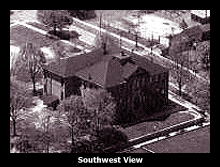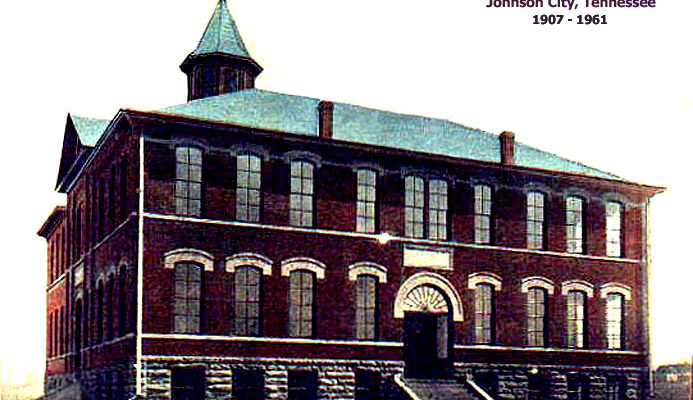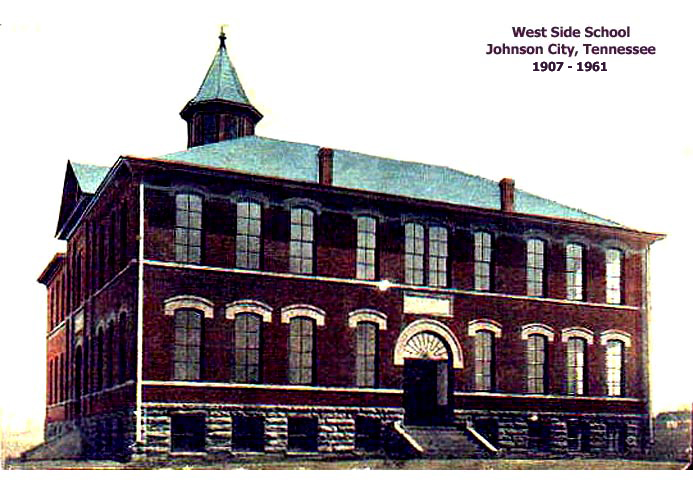Harriet Barkei, formerly of Johnson City, wrote me sharing additional memories of West Side School. We attended separate classes there during the 1949-1950 school year.

She remembers an early morning ritual: “The school had a bell tower, and the principal, Mr. Mahoney, pulled the rope hanging in the upstairs hallway and rang the big bell every morning to call us ‘youngins’ to school.” Ms. Barkei recalled that there were three entrances to the building:Watauga Avenue (west side, with “Built in 1907” inscribed over the door), Main Street (north) and the side facing downtown (east).
She further commented: “The principal’s office was opposite the Main Street entrance. The doors to the first floor rooms were on a diagonal, making the large inside hall an octagon. There were large cloakrooms by the side of each classroom. The classrooms had thick wooden doors with glass transoms on top that could be opened to let a breeze through without opening the door. Those were the days before air conditioning.”
Harriet remembered the little white chairs at the back of the room, where Miss Taylor held her reading circles: “My first grade readers were the Dick and Jane books, written in the 1930s. The famous sentence in those primers was “See Spot Run.”
By 1949, the school had switched to the John C. Winston Company, “Easy Growth In Reading” series, ten books authored by Gertrude Hildreth. Our first book was titled, At Play, with siblings, Bob and Nancy, and their pets, Mac (a black Scottie dog) and Muff (a calico colored cat). How well I remember these characters.
The former student recalled all six of her teachers: Mildred Taylor (first), Mrs. Deer (second), Miss Tomlinson (third), Mrs. Sisk (fourth), Miss Adams (fifth) and Miss Ruth Martin (sixth). The music teacher, Mrs. Meek, was one of her favorites: “When I was in the first grade, she saw that I had a loose tooth, and she tied a string around it and pulled it out for me right during music class.”
Harriet and I both remember the two unique disciplinary techniques used by Miss Taylor: “She would either shake your ear or grab you by the chin and rattle your teeth.” She further recalled the weekly assembly programs on the second floor: “We attended assembly every Friday morning. It always started out with Bible reading and prayer. I was the mother bear in the first grade play, given on one Friday morning and later repeated for a PTA meeting. What fun!”
Today, the only vestiges of this former grammar school are the block walls and concrete steps at the northwest corner of the property. Harriet recollects that these blocks matched the foundation blocks of the school.
The concluding lyrics to “School Days” seem to lament the passing of this and other old schools: “Member the hill, Nellie Darling; And the oak tree that grew on its brow?; They've built forty stories upon that old hill; And the oaks an old chestnut now. 'Member the meadows so green dear; So fragrant with clover and maize; Into new city lots and preferred bus'ness plots; They've cut them up since those days.”


